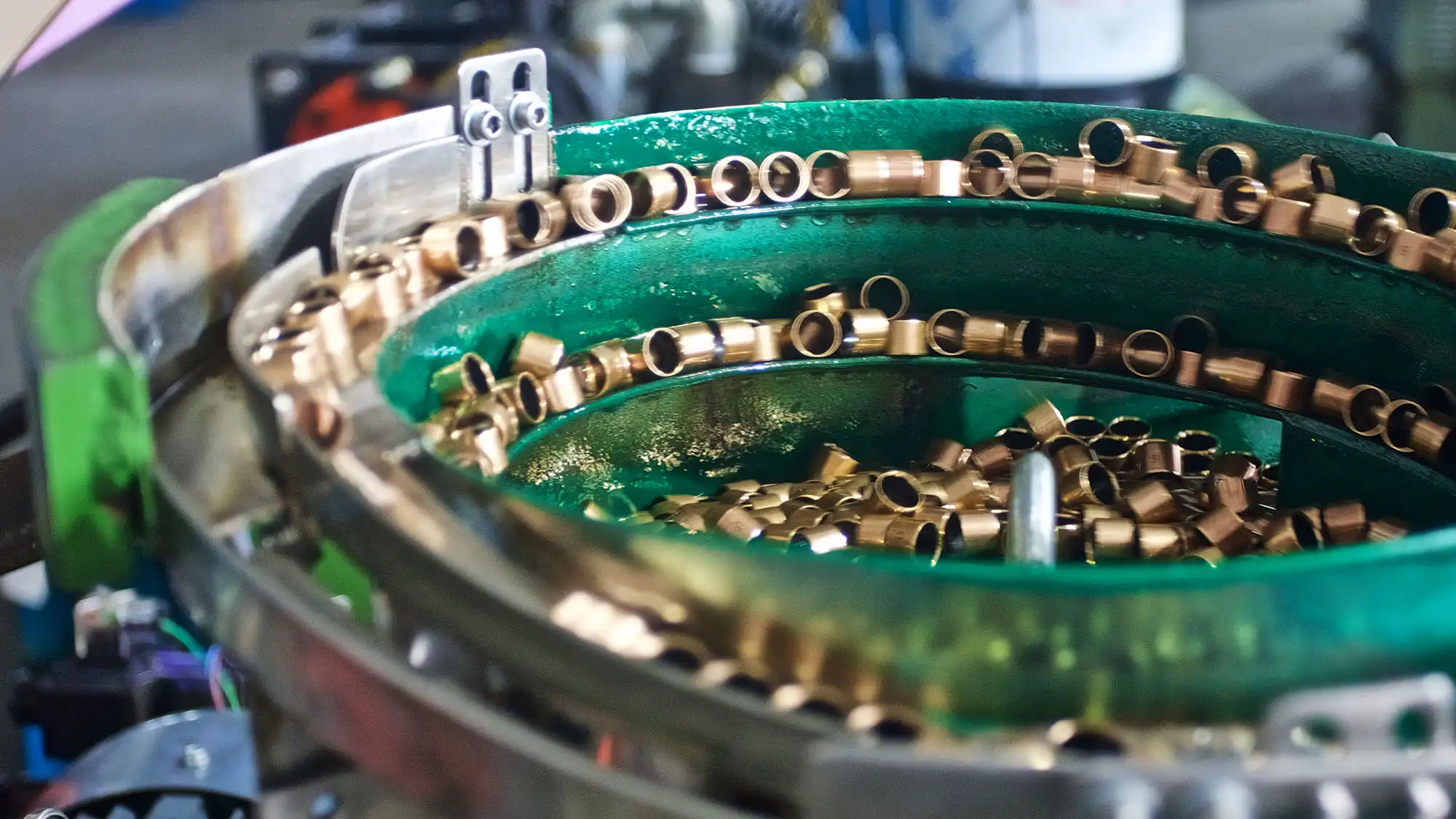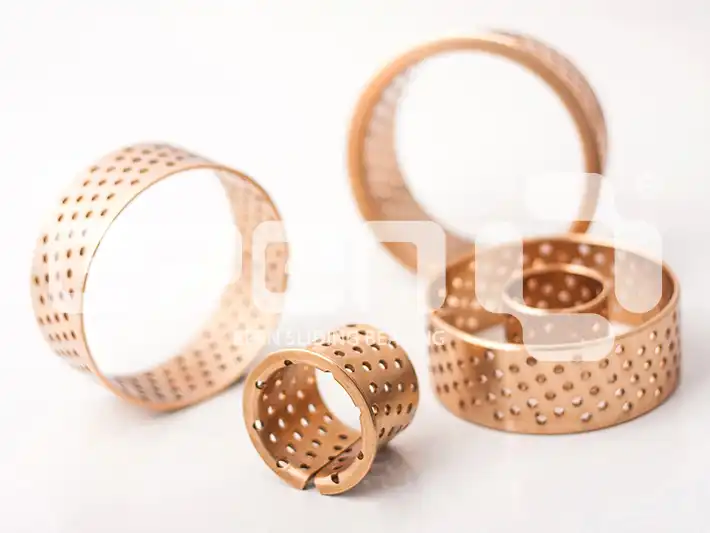Understanding Sliding Bearings in Extreme Temperatures
Key Technical Challenges in Extreme Temperatures
High-Temperature: Lubricant evaporation/oil coking, loss of material strength, thermal creep, and oxidative degradation.
Cryogenic-Temperature: Lubricant solidification, material embrittlement, and significant differential thermal contraction.
The Challenges of Extreme Temperature Environments
Mechanical parts, and sliding bearings in particular, are quite vulnerable under extremely hot conditions. In high-temperature settings, conventional bearings may experience thermal expansion, lubrication breakdown, and accelerated wear. Conversely, extremely cold environments can lead to material brittleness, lubricant solidification, and reduced bearing performance. Specialized sliding bearing solutions that can withstand a broad temperature range without compromising structural integrity or performance are required for these situations.
Material Selection for Temperature Resistance
The choice of materials plays a pivotal role in developing sliding bearings for extreme temperatures. To make things more heat resistant, people often use advanced metals, ceramics, and composites. For instance, metal-plastic composite bearings combine the strength of metal with the temperature resistance and self-lubricating properties of engineered plastics. The combination of two or more metals in a bimetal bearing makes it very resistant to wear and heat, making it ideal for use in environments where temperatures can reach dangerous levels.
Lubrication Strategies for Extreme Conditions
Proper lubrication is essential for sliding bearing performance, but traditional lubricants may fail under extreme temperatures. To maintain reliable bearing performance, cutting-edge lubrication techniques are used, including self-lubricating polymers, dry film coatings, and solid lubricants. These solutions keep friction low even in extreme heat and humidity, and they do away with the need to relubricate often.
Our Core Technology & Material Solutions
1. High-Temperature Bearing Systems (Operating range: 200°C to over 800°C)
Materials: Utilize copper-based or iron-based powder metallurgy materials, uniformly impregnated with solid lubricants such as graphite, silver, or PTFE. This provides a continuous, self-lubricating film even in vacuum or where oils and greases cannot function.
Self-Lubricating Composite Bushings:
Materials: Feature a high-strength steel backing for structural integrity, a sintered porous bronze interlayer for superior heat dissipation and load distribution, and a PTFE-based liner. This design offers exceptionally low friction and dry-running capability up to 280°C.
Specialty Alloy & Graphite Bearings:
Materials: Engineered from high-performance alloys (e.g., Inconel, Hastelloy) paired with high-purity graphite. Ideal for extremely high temperatures and corrosive atmospheres, commonly used in furnace applications and chemical processing.
2. Cryogenic Bearing Systems (Operating range: -50°C to -253°C / Liquid Nitrogen)
PTFE-Based Composite Bearings:
Materials: Employ a unique PTFE-fiber composite liner that remains ductile and provides a low coefficient of friction at cryogenic temperatures. The composite is bonded to a stainless steel backing (e.g., 304 or 316 SS) with matching thermal contraction properties.
Specialty Polymer & Engineering Plastic Bearings:
Materials: Utilize advanced polymers like PEEK (Polyetheretherketone) or Vespel, which maintain excellent mechanical properties and low friction in cryogenic conditions without becoming brittle.
Design Features & Engineering Advantages
Thermal Stability: Our materials and designs are optimized to maintain dimensional integrity and performance across a wide thermal gradient.
Maintenance-Free Operation: The self-lubricating nature of our solutions eliminates the need for external lubrication systems, which are prone to failure in extreme conditions.
Corrosion Resistance: Materials are selected for compatibility with aggressive media often present in high-temperature (e.g., combustion gases) or cryogenic (e.g., liquid oxygen) environments.
Custom Engineering: We provide bespoke solutions tailored to specific application parameters, including load (static and dynamic), speed, thermal cycling frequency, and environmental contaminants.
Applications of Extreme Temperature Sliding Bearings
Automotive and Aerospace Industries
Engine parts, turbochargers, and exhaust systems are some of the places you might find sliding bearings made for high temperatures in automobiles. Extreme heat and quick temperature changes are no match for these bearings. For jet engines, which experience extremely high temperatures while in flight, the aerospace sector also uses specialized sliding bearings. To keep everyone safe and running smoothly, you need to be able to keep your stability and performance levels up in extreme environments.
Industrial Furnaces and Kilns
Industrial furnaces and kilns operate at extremely high temperatures, necessitating sliding bearings that can withstand prolonged exposure to heat. Bearings used in these environments often incorporate advanced ceramic materials or high-temperature alloys to ensure longevity and reliability. Specialized bearings allow furnace components, such as rotary kilns and conveyor systems, to function continuously even under extreme heat.
Cryogenic Applications
On the opposite end of the temperature spectrum, cryogenic applications require sliding bearings that can function effectively at extremely low temperatures. Spacecraft and industries that process natural gas rely on these bearings to facilitate the handling of liquefied gasses. The materials and designs employed in cryogenic sliding bearings must maintain their mechanical properties and prevent brittleness in sub-zero environments.
Innovations in Extreme Temperature Bearing Technology
Nanotechnology-Enhanced Bearings
Recent advancements in nanotechnology have led to the development of sliding bearings with enhanced temperature resistance. Bearing surfaces can be made far more resistant to wear and thermal fluctuations by using nanocomposite materials and nanocoatings. These advancements pave the way for bearings to be designed to function effectively in a wider temperature range, broadening their possible uses in harsh conditions.
Smart Bearing Systems
A smart bearing system is one that uses sliding bearings that have sensors and monitoring technology built in. Temperature, wear, and performance indicators may be monitored in real-time by these high-tech bearings. This usefulness empowers prescient upkeep and early issue location in regions with extreme temperatures, which makes strides framework unwavering quality and diminishes downtime.
Customized Solutions for Specific Applications
As industries continue to push the boundaries of operational environments, the demand for customized sliding bearing solutions has grown. To meet the unique temperature demands of various applications, bearing manufacturers are now providing customized designs. From space travel to deep-sea oil drilling, this method guarantees top performance and durability in the harshest environments.
Why Partner With EPEN Bearing?
We combine deep material science expertise with precision manufacturing to deliver bearing solutions that push the boundaries of what's possible. Our products are not just components; they are critical enablers for your most innovative and demanding engineering projects.


Conclusion
Mechanical progressions in fabricating have driven to the creation of sliding bearing courses of action that are safe to amazingly tall temperatures. In situations where customary heading would wear out quick, these forte orientation keep apparatus and gear running easily. Robust, temperature-resistant sliding bearings will become more important as companies venture into more difficult settings. A modern time of mechanical advancement and logical disclosure is unfolding as producers utilize cutting-edge materials, plans, and innovations to test the limits of extraordinary temperature applications.
FAQs
1. What are the main advantages of using specialized sliding bearings in extreme temperature environments?
Specialized sliding bearings offer upgraded strength, made strides execution, and longer benefit life in extraordinary temperatures. They keep up their basic astuteness and usefulness over wide temperature ranges, lessening upkeep needs and downtime.
2. Can sliding bearings for extreme temperatures be used in both hot and cold environments?
Yes, there are sliding bearings designed for both high and low-temperature extremes. The specific design and materials used depend on the intended application and temperature range.
3. How do self-lubricating bearings benefit extreme temperature applications?
Self-lubricating bearings eliminate the need for external lubrication, which can break down or solidify in extreme temperatures. This guarantees reliable functioning and minimizes the need for maintenance even in harsh conditions.
Expert Sliding Bearing Solutions for Extreme Environments | EPEN
At Jiashan Epen Bearing Co., Ltd., we specialize in manufacturing high-quality sliding bearings for extreme temperature environments. Our extensive range includes metal-plastic composite bearings, bimetal bearings, and single metal sliding bearings, designed to excel in challenging industrial applications. With our commitment to innovation and customer satisfaction, we offer customized solutions to meet your specific needs. Contact our sliding bearing supplier team at epen@cnepen.cn to discover how our advanced bearing technology can enhance your operations.
References
Smith, J. (2022). Advanced Materials for Extreme Temperature Bearings. Journal of Tribology and Lubrication, 45(3), 78-92.
Johnson, A., & Lee, S. (2021). Innovations in Sliding Bearing Design for High-Temperature Applications. International Journal of Mechanical Engineering, 33(2), 145-160.
Brown, R. (2023). Cryogenic Bearing Technologies: Advancements and Challenges. Cryogenics Today, 18(4), 210-225.
Chen, L., et al. (2022). Nanocomposite Coatings for Extreme Temperature Sliding Bearings. Nanotechnology in Engineering, 9(1), 55-70.
Williams, P., & Garcia, M. (2021). Smart Bearing Systems for Industrial Applications. Sensors and Actuators Journal, 28(3), 180-195.
Taylor, K. (2023). Performance Analysis of Self-Lubricating Bearings in Extreme Environments. Tribology International, 67(2), 300-315.




